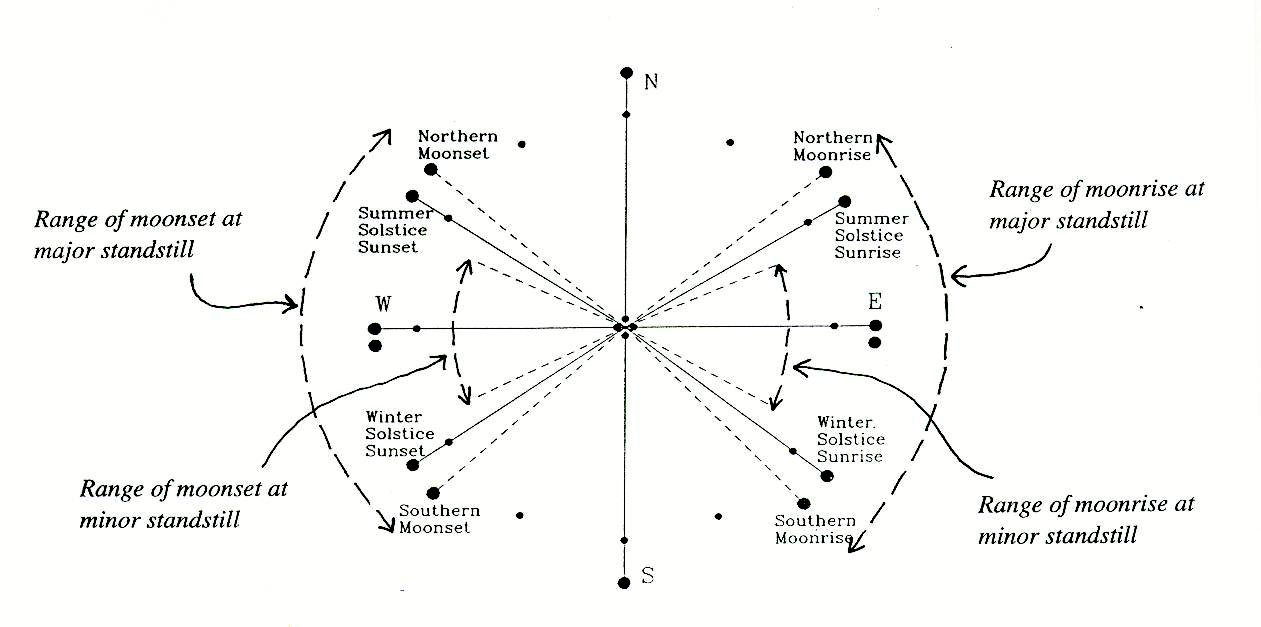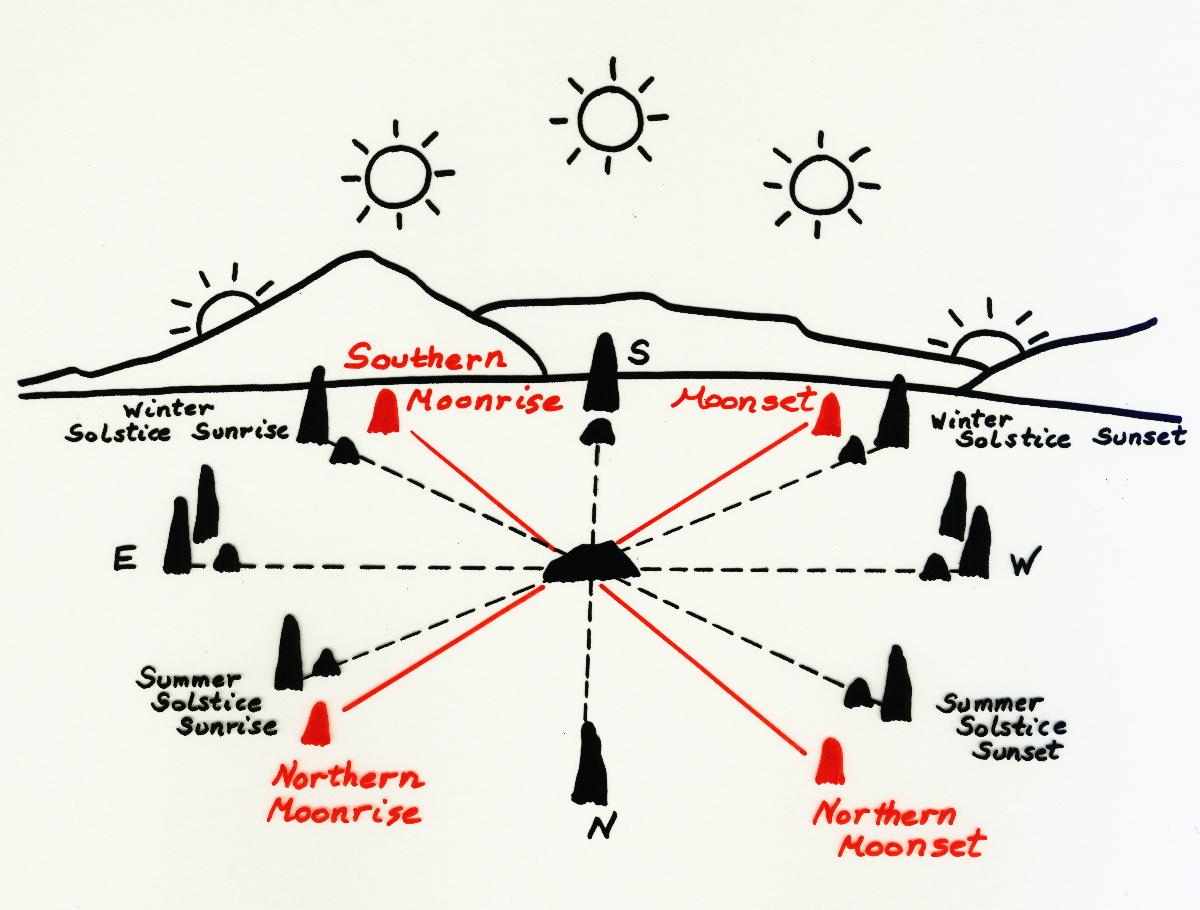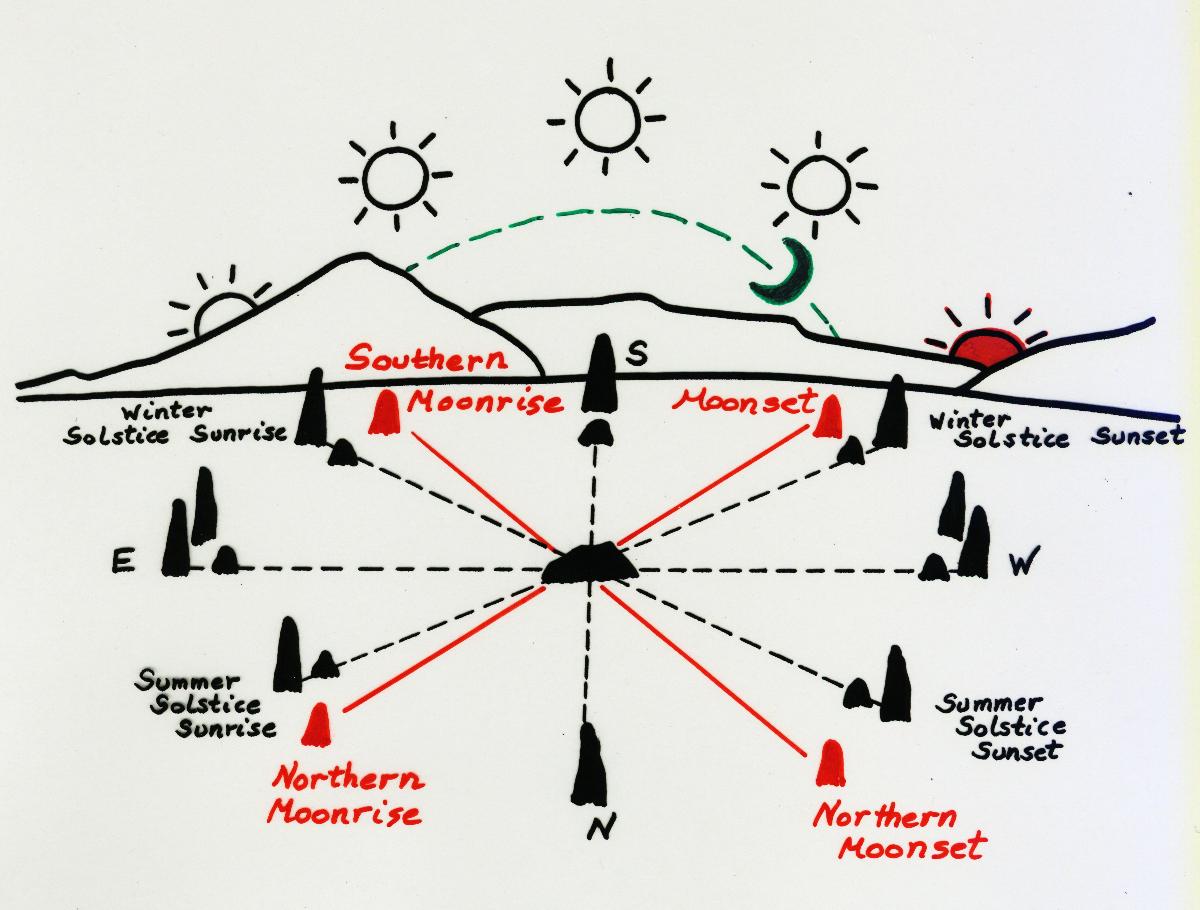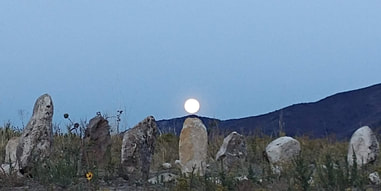Back when Secret History was going through its first edits, Frank J (QFG
researcher) was quite fascinated by the discussion of the 19 year cycle.
He decided to do some research.
The graphs and things he included in his paper aren't included in the following, but they aren't necessary. What is important are his remarks as well as the upcoming event.
Those who have read "The Secret History of the World" are aware of the possible significance of this event.
19-year Lunar Cycles
By Frank J
I was inspired to put together this little paper by the discussion in
'Secret History' concerning the importance of the 19-year lunar cycle in the
cultures of some ancient civilizations, in particular the culture that
flourished around Stonehenge. The C's suggests that the 19-year cycle is a
window, gravitationally induced, for direct access by humans ("right
people, right place, right activity, right time") can directly access
higher dimensions without any help from other entities. by engaging in
group activities,
carried out in a geometric pattern, and
with certain amplification materials in particular geographic locations,
and
the participants having fused their magnetic centers,
And, of course, I am also interested in where we are now in that cycle.
The following explanations are cobbled together
from several scientific and archaeological sites on the Internet, and their
web addresses are provided at the end of this article.
Predictable motions of the earth's rotation axis on time scales less than
300 years are all referred to as nutation, a correction to the precession
cycle (26,000 years). The currently standard nutation theory is composed of
106 non-harmonically-related sine and cosine components, mainly due to
second-order torque effects from the sun and moon, plus 85 planetary
correction terms. The four dominant periods of nutation are 18.6 years
(precession period of the lunar orbit), 182.6 days (half a year), 13.7 days
(half a month), and 9.3 years (rotation period of the moon's perigee).
The primary nutation of 18.6 years drives two other observational cycles:
the Saros cycle (18 years and 11 days) and the Metonic Cycle (19 years)
Primary Nutation Cycle
The cause of this cycle is the precession of the lunar orbit about he Earth.
In addition, the Sun's gravitational pull leads to a precession of the
Moon's orbital axis, with a period of 18.6 years. This precession advances
the locations where the moon's orbit crosses the ecliptic (the nodes).
Eclipses will occur on the new or full moon nearest the time that the sun
passes one of the nodes
There are several observational consequences of this cycle, none of which
require a technical knowledge of the lunar precession.
Solar Eclipse Prediction
This cycle causes every eclipse of the sun to repeat itself at a different
place on the earth every 18.6 years. The effect of this "wobble" is that
eclipses seasons occur 365.24/18.6= 19.6 day earlier every year. Thus in
1997, the eclipse season of the fall will be centered about the node 19.6
days earlier than that of the previous year.
Lunar Standstills: Because of the 5.1 degree tilt of the moon's orbit with
respect to the ecliptic, the moon may be anywhere within 5.1 degrees above
or below the ecliptic. During major standstills the moon reaches a
declination of 23.5 plus 5.1 degrees or 28.6 degrees; major standstills
occur every 18.6 years. At minor standstill the greatest declination that
the moon reaches is 23.5 minus 5.1 degrees or 18.4 degrees.
This means that every 18.6 years, the rising or setting Moon reaches a
northern extreme in rising and setting azimuth at summer solstice, and a
southern extreme at winter solstice. These are called major standstills.
While such standstills can in principle be determined using horizon
observations, as with the summer solstice Sun the Moon's year-to-year
angular displacement along the horizon at summer solstice is very small near
standstill. It should be noted that 18.6 years is measured from the point of
view of the lunar orbit. Observationally, from the Earth's surface, the
length of time between two major standstills is not 18.6 years: it switches
back and forth between 18.5 years and 19 years, and 18.6 years is an
observational average. This may become clearer by looking closely at the
behavior of the moon at the time of her extreme positions. This chart shows,
for the current and three most recent nodal cycles, the maximum southern
azimuth position of the rising moon reached during each month for
approximately three years. The data shown are the maximum rising moons for
the periods Mar 1, 1949 - Mar 31, 1952; Sep 1, 1967 - Sep 30, 1970; Mar 1,
1986 - Mar 31, 1989; Sep 1, 2004 - Sep 30, 2007.
To understand what 'standstill" means observationally, it will be easier to
use the Sun as an example. The sun rises furthest to the north at the summer
solistice, around June 21 each year. Following the summer solistice it will
begin to rise a little further south each day, rising due east at the fall
equinox around September 21, and reaching its southernmost rising point at
the winter solistice around December 21. After the winter solstice the sun
will begin rising further north each day, rising due east at the spring
equinox around March 21, and finally reaching its northernmost rising point
again around June 21. The slow sweep of the sun's rising azimuth across the
eastern horizon takes a full year, and practically repeats itself exactly
from year to year. The rising point changes very little from day to day when
it's rising near either the northern or southern extremes of its motion.
This phenomenon is known as the "standstill." For several days around either
solstice the sun's rising azimuth will hardly change at all. In contrast,
when the rising point is between the extremes, say around the equinoxes, the
rising azimuth changes quite a bit from day to day. This phenomenon of
"standstills" near the extremes applies to periodic motion of many kinds,
including the motions of the moon.
The rising point of the moon changes from day to day in a very analogous
way, marking out a sweep from north to south and back again, except that it
takes only one month to accomplish one complete cycle. The actual period of
this cycle is the "draconitic month" of 27.21222 days, on the average.
Unlike the sun, however, the extremes of the northernmost and southernmost
rising azimuths will not remain the same for each cycle. After noting the
northernmost rising point for the moon during one month, one may very well
find it rises at a point even further north the next month. In fact, there
is an 18.61-year variation in the extremes of the moon's rising point.
A major standstill limit will happen at the moment the moon is near a
quarter moon and the lunar node is near the vernal (or autumnal) point. The
moon is at his highest point in its orbit and combining this with lunar
phase, the sun is near equinox.
Saros Cycle
The periodicity of solar eclipses depends upon two lunar orbital cycles
coinciding with the moon passing through a node. First, a new moon occurs on
average every 29.530588 days. The moon's average orbital period, perigee to
perigee, is 27.554548 days. These cycles repeat every 18 years, 11 1/3 days;
or 6585.3211 days; or 233 new moons, approximately 239 perigees and 242
nodes. Every eclipse in a Saros family shares the same 18 year, 11.33 day
cycle.
Calculation:
223 lunar synodic months = 29.053059*223 = 6585.3216
242 lunar draconitic months = 27.21222*242 = 6585.3572
The Metonic Cycle
Another pattern evident in the table is that the solar calendar dates of
maximum moonrises often repeat, 19 years apart:
1 solar year = 365.2425 days
1 lunar synodic month (full moon to full moon) = 29.53059 days
19 years = 365.2425*19 = 6939.6075 days
235 lunar synodic months = 29.53059*235 = 6939.6887 days
This is a difference of only 0.0812 days, or about two hours. So, after
exactly nineteen solar years the sun will return to the same position
relative to the stars (by definition), and the moon will have very nearly
the same phase (just two hours difference). This fact was much appreciated
by the Greeks, as the dates of the new moon, full moon, etc., would repeat
every nineteen years.
For the purposes of maximum moonrises, the above coincidence alone would not
be enough to ensure that maximum moonrises will occur on the same date 19
years apart, it only guarantees the phase will be the same on the same
dates.
Another well-known aspect of the Metonic cycle is that since the sun, moon
and earth return to the same relative positions, the pattern of eclipses of
the moon and sun may repeat somewhat after 19 years elapses. The half-day
difference of the lunar draconitic cycle however is enough to throw the
eclipse repeatability out of kilter fairly rapidly, but three or four
eclipses may repeat, on the same dates 19 years apart, before this happens.
In any given year the solar calendar dates of Full Moon events will be
duplicated every 19 years. This creates a clear cycle connection that was
delineated by the mythic 19 Priestesses of Bridget. Each of these individual
"Priestesses" represented the "character" and experience of each of the 19
components of the Great Lunar Year. This relationship creates an excellent
basis for cyclic pattern divinations. A 19 year cycle upon which one can
hang other, shorter cycling patterns for delineation and understanding
Conclusion
So, I conjecture that the gravitational "window" in TIME that allows "the
right person, in the right group, at the right time and at the right place"
to access hyperdimensions is the standstill point, also called lunarstice.
When is the next one?
September 2, 2006










